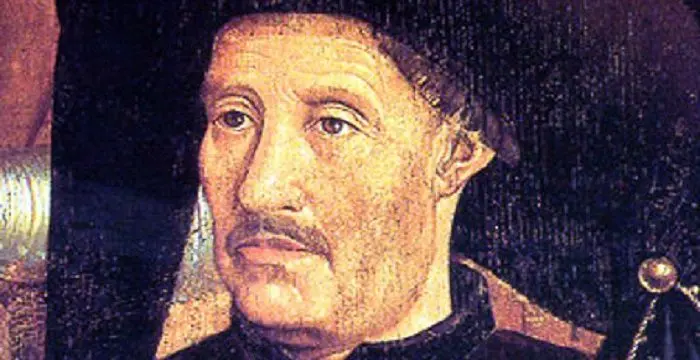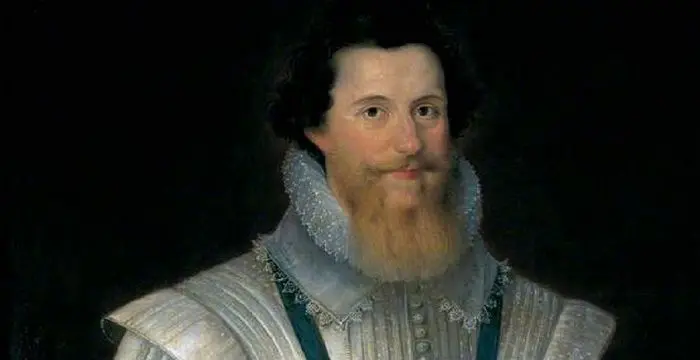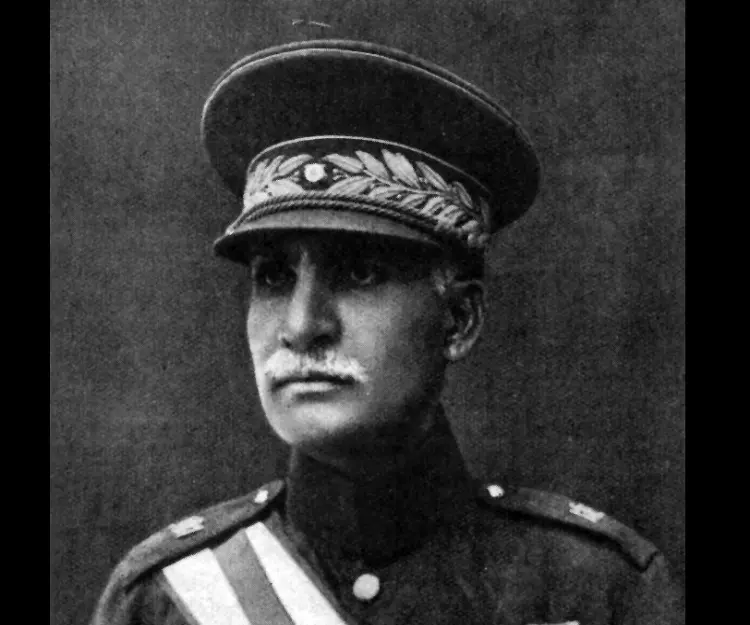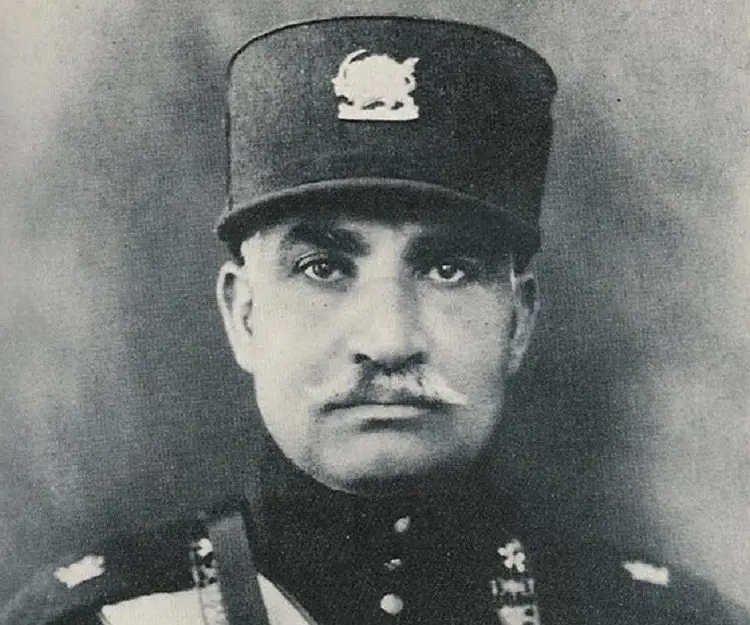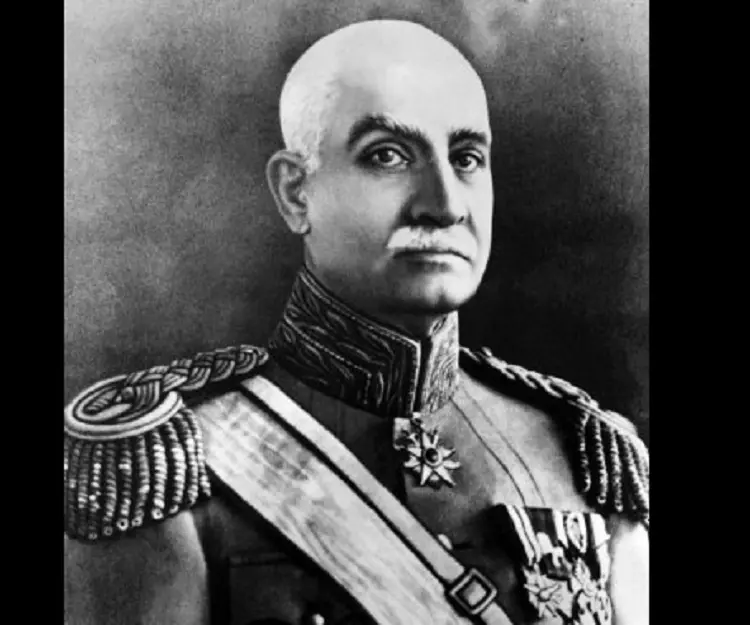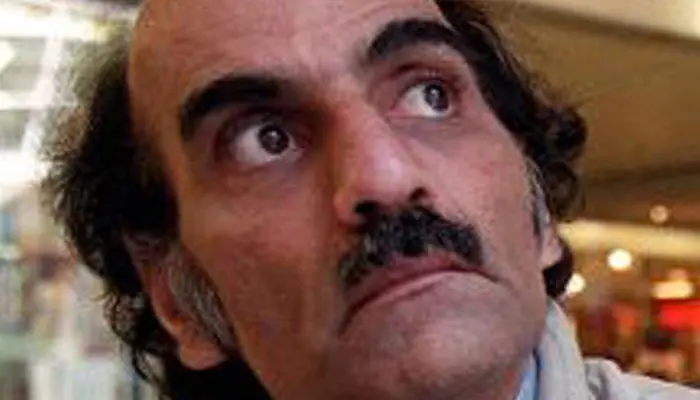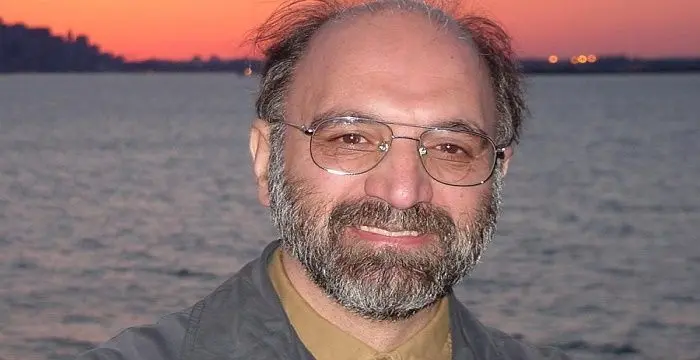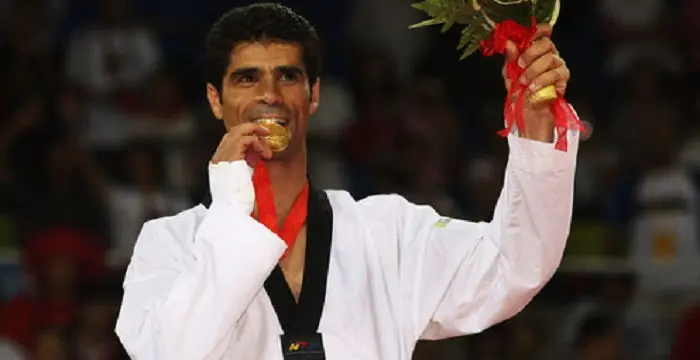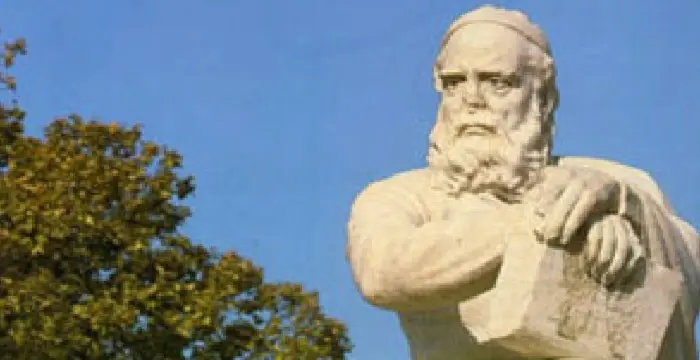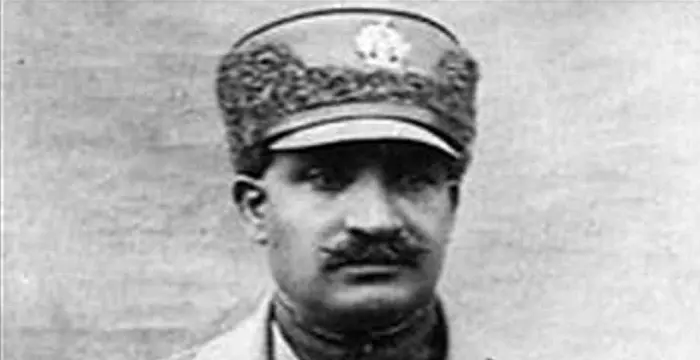
Rezā Shāh - Political Figure, Timeline and Family
Rezā Shāh's Personal Details
Reza Shah was the founder of the Pahlavi dynasty and Shah of Iran from 1925 to 1941
| Information | Detail |
|---|---|
| Birthday | March 15, 1878 |
| Died on | July 26, 1944 |
| Nationality | Iranian |
| Famous | Leaders, Political Leaders, Political Figure |
| Spouses | Maryam Khanum, Tadj ol-Molouk, Turan |
| Known as | Rezā Shāh Pahlavi, Rezā Khan |
| Childrens | Mohammad Reza Pahlavi |
| Founder / Co-Founder |
|
| Birth Place | Alasht |
| Religion | Shia Islam, Islam, Sunni Islam, Zoroastrianism |
| Gender | Male |
| Father | Abbas Ali Khan |
| Mother | Noush-Afarin Ayromlou |
| Sun Sign | Pisces |
| Born in | Alasht |
| Famous as | Political figure |
| Died at Age | 66 |
// Famous Political Figure
Henry the Navigator
The Portugal navigator is credited for founding the first navigation school and is considered one of the pioneers in discovery of new lands. To know more about his childhood, profile, timeline and career read on.
Mireya Moscoso
Mireya Moscoso was the first Female President of Panama, and of the ‘Arnulfista Party’, a leading Panamanian political organization. Read on to find detailed information about his childhood, profile, career and timeline
Robert Devereux, 2nd Earl of Essex
Robert Devereux Essex was the 2nd Earl of Essex, an English soldier and nobleman who was one of the favorites of Queen Elizabeth I.
Rezā Shāh's photo
Who is Rezā Shāh?
Reza Shah was the founder of the Pahlavi dynasty and Shah of Iran (Persia) from 1925 to 1941. He founded the Pahlavi dynasty, after ending the century-old Qajar dynasty, and subsequently introduced and implemented steps to improve the prevailing social, economic and political conditions in Iran. From the profile of an army officer, he quickly rose to the post of war minister, followed by his appointment as the Prime Minister of the new regime. Thereafter, he founded the Pahlavi dynasty and became the Shah of Iran. He became popular among the masses due to his social, economic and political reforms. He also played a major role in changing the name of Persia to Iran. Despite having no formal education, he was extremely talented and intelligent to give Iran complete makeover. While his supporters approved of his decision to modernize Iran, his critics were dissatisfied by his ignorance towards the peasants and lower classes, which eventually triggered the Iranian Revolution, thus bringing an end to his constitutional monarchy. Construction of the Trans-Iranian Railway, foundation of the University of Tehran, and sponsoring Iranian students to European universities were some of the major developments initiated by him
// Famous Political Leaders
Edi Rama
Edi Rama is the current Prime Minister of Albania. Check out this biography to know about his childhood, life, achievements, works & timeline.
Khalifa bin Zayed Al Nahyan
Sheikh Khalifa bin Zayed Al Nahyan is the current President of the United Arab Emirates (UAE). Check out this biography to know about his birthday, childhood, family life, achievements and fun facts about him.
Leo Varadkar
Cam Leo Varadkar is the current Taoiseach—the Prime Minister—of the Republic of Ireland. Check out this biography to know about his childhood, family life, achievements and other facts about his life.
Childhood & Early Life
Reza Shah Pahlavi was born as Reza Khan on March 15, 1878 in Alasht village, Savad Kouh County, Mazandaran Province, to Major Abbas Ali Khan and his second wife, Noush Afrin Ayromlou.
After his father’s death a few months following his birth, his mother took him to Tehran where she settled with her brother.
At the age of 16, he joined the Persian Cossack Brigade. He is also said to have served as a guard and servant under Dutch consul general Frits Knobel in 1903.
Career
He served in the Iranian Army under Qajar Prince Abdol Hossein Mirza Farmanfarma and rose to the rank of gunnery sergeant. His good account of service led to his promotion as a Brigadier General in the Cossacks, in 1918.
Post the Russian Revolution of 1917, Britain and Soviet Russia vied with each other for better influence over Iran (Persia). By 1920, British and Soviet forces had control over most of the Iranian mainland.
In the midst of this political crisis in Iran, Reza Khan entered Tehran with his Cossack Brigade and seized control of the capital city of Tehran in the coup d'état on February 21, 1921. He forced the dissolution of the previous government and became the Commander of the Iranian Army and war minister in the new government and carried out the withdrawal of Russian troops.
During his tenure as minister of war, he brought modernization and harmony, built a strong army, and secured the nation from both domestic and foreign threats, thus establishing peace – a situation Iran had been missing for a century.
Upon approval from Ahmad Shah Qajar, he became the prime minister of the new regime in 1923. After Qajar left for Europe for a lengthy cure, he started working towards the creation of a republic.
After succeeding in convincing the Majlis, he overthrew the absentee monarch Qajar and was proclaimed as the Shah of the Kingdom of Iran in 1925. This brought an end to the Qajar dynasty and establishment of the Pahlavi dynasty.
He was coronated in April 1926 and changed his name to Reza Shah Pahlavi. He also proclaimed his son, Mohammad Reza Pahlavi, as the Crown Prince of Persia.
Due to his autocratic style of ruling, he removed a number of ministers on various accusations of corruption, resulting in their imprisonment and death subsequently.
After a few years of industrialization and development programmes, he started forced acquisition of land, due to his rapacious nature. As a result, dissatisfaction started prevailing in the country, by mid-1930s.
In 1932, he canceled the agreement given to British company, Anglo-Persian Oil Company. Even though a new agreement was signed and Shah was offered 21% share instead of the previous 16%, both parties were disappointed.
To counterbalance the British and Soviet influence on Iran, he increased trade relations with Germany and by the onset of World War II, Germany was Iran’s largest trading partner.
As a matter of policy, he always tried to play Soviet Union off against the British but this policy failed when the two joined in 1941 against Germany. As a result, Russian and British troops invaded Iran in August 1941, forcing the Persian army to surrender in less than a week.
In order to preserve his dynasty, he relinquished his crown as demanded by the invading British who agreed to make his son, Mohammad Reza Pahlavi, the next Shah of Iran in exchange of an exile.
His son ascended the throne in September 1941, after which he was taken by the British troops first to Mauritius, then to Durban and finally Johannesburg.
Major Works
In 1934, he succeeded in setting up the country’s first European-style modern school, the University of Tehran, providing modern education and training for bureaucrats as well as the middle class.
He freed the women from wearing the veil in 1935 and encouraged them to receive education at schools and seek employment.
He sent a letter to the League of Nations suggesting the change of name from Persia to Iran and this was implemented in 1935.
Road networks were improved and expanded under his rule - the most significant of them being the Trans-Iranian Railway, which opened in 1938.
He initiated sponsorships for Iranian students to study in European universities and ended all special rights provided to foreigners, thereby giving Iran independence in true sense.
He set up state-owned factories for the production of basic consumer goods, like sugar, canned goods, matches, textiles and cigarettes.
He ended the religious hierarchy by allocating state-licensed notaries for notarizing documents, rather than clerics who had been doing it for years.
Personal Life & Legacy
He married Maryam Khanum in 1894. He had a daughter, Hamdan Saltaneh Pahlavi in 1903. However, Maryam died in 1904.
He married for a second time to Tadj ol-Molouk in 1916, who bore four children – daughter Shams Pahlavi, Crown Prince Mohammad Reza Shah Pahlavi, daughter Ashraf Pahlavi, and son Ali Reza Pahlavi.
His third wife was Turn (Qamar al Molouk) Amir Soleimani, whom he married in 1922. The couple had a son, Gholam Reza. They later divorced in 1923.
His fourth marriage to Esmat Dowlatshahi in 1923 resulted in five offsprings – son Abdul Reza Pahlavi, son Ahmad Reza Pahlavi, son Mahmud Reza Pahlavi, daughter Fatimeh Pahlavi, and son Hamid Reza Pahlavi.
He died in 1944, due to a heart ailment, while in exile in Johannesburg, South Africa. His body was taken to Egypt, where it was embalmed and preserved in Al Rifa’I Mosque, Cairo, till 1950.
His body was taken to Iran, and was buried in Ray, Tehran, but was later taken back to Cairo and buried in Al Rifa’I Mosque, in 1979.
// Famous Leaders
Edi Rama
Edi Rama is the current Prime Minister of Albania. Check out this biography to know about his childhood, life, achievements, works & timeline.
Tecumseh
Tecumseh was a Native American leader of the Shawnee clan. This biography profiles his childhood, life and timeline.
Khalifa bin Zayed Al Nahyan
Sheikh Khalifa bin Zayed Al Nahyan is the current President of the United Arab Emirates (UAE). Check out this biography to know about his birthday, childhood, family life, achievements and fun facts about him.
Rezā Shāh biography timelines
- // 15th Mar 1878Reza Shah Pahlavi was born as Reza Khan on March 15, 1878 in Alasht village, Savad Kouh County, Mazandaran Province, to Major Abbas Ali Khan and his second wife, Noush Afrin Ayromlou.
- // 1894 To 1904He married Maryam Khanum in 1894. He had a daughter, Hamdan Saltaneh Pahlavi in 1903. However, Maryam died in 1904.
- // 1903At the age of 16, he joined the Persian Cossack Brigade. He is also said to have served as a guard and servant under Dutch consul general Frits Knobel in 1903.
- // 1916He married for a second time to Tadj ol-Molouk in 1916, who bore four children – daughter Shams Pahlavi, Crown Prince Mohammad Reza Shah Pahlavi, daughter Ashraf Pahlavi, and son Ali Reza Pahlavi.
- // 1917 To 1920Post the Russian Revolution of 1917, Britain and Soviet Russia vied with each other for better influence over Iran (Persia). By 1920, British and Soviet forces had control over most of the Iranian mainland.
- // 1918He served in the Iranian Army under Qajar Prince Abdol Hossein Mirza Farmanfarma and rose to the rank of gunnery sergeant. His good account of service led to his promotion as a Brigadier General in the Cossacks, in 1918.
- // 21st Feb 1921In the midst of this political crisis in Iran, Reza Khan entered Tehran with his Cossack Brigade and seized control of the capital city of Tehran in the coup d'état on February 21, 1921. He forced the dissolution of the previous government and became the Commander of the Iranian Army and war minister in the new government and carried out the withdrawal of Russian troops.
- // 1922 To 1923His third wife was Turn (Qamar al Molouk) Amir Soleimani, whom he married in 1922. The couple had a son, Gholam Reza. They later divorced in 1923.
- // 1923Upon approval from Ahmad Shah Qajar, he became the prime minister of the new regime in 1923. After Qajar left for Europe for a lengthy cure, he started working towards the creation of a republic.
- // 1923His fourth marriage to Esmat Dowlatshahi in 1923 resulted in five offsprings – son Abdul Reza Pahlavi, son Ahmad Reza Pahlavi, son Mahmud Reza Pahlavi, daughter Fatimeh Pahlavi, and son Hamid Reza Pahlavi.
- // 1925After succeeding in convincing the Majlis, he overthrew the absentee monarch Qajar and was proclaimed as the Shah of the Kingdom of Iran in 1925. This brought an end to the Qajar dynasty and establishment of the Pahlavi dynasty.
- // Apr 1926He was coronated in April 1926 and changed his name to Reza Shah Pahlavi. He also proclaimed his son, Mohammad Reza Pahlavi, as the Crown Prince of Persia.
- // 1932In 1932, he canceled the agreement given to British company, Anglo-Persian Oil Company. Even though a new agreement was signed and Shah was offered 21% share instead of the previous 16%, both parties were disappointed.
- // 1934In 1934, he succeeded in setting up the country’s first European-style modern school, the University of Tehran, providing modern education and training for bureaucrats as well as the middle class.
- // 1935He freed the women from wearing the veil in 1935 and encouraged them to receive education at schools and seek employment.
- // 1935He sent a letter to the League of Nations suggesting the change of name from Persia to Iran and this was implemented in 1935.
- // 1938Road networks were improved and expanded under his rule - the most significant of them being the Trans-Iranian Railway, which opened in 1938.
- // Aug 1941As a matter of policy, he always tried to play Soviet Union off against the British but this policy failed when the two joined in 1941 against Germany. As a result, Russian and British troops invaded Iran in August 1941, forcing the Persian army to surrender in less than a week.
- // Sep 1941His son ascended the throne in September 1941, after which he was taken by the British troops first to Mauritius, then to Durban and finally Johannesburg.
- // 1944 To 1950He died in 1944, due to a heart ailment, while in exile in Johannesburg, South Africa. His body was taken to Egypt, where it was embalmed and preserved in Al Rifa’I Mosque, Cairo, till 1950.
- // 1979His body was taken to Iran, and was buried in Ray, Tehran, but was later taken back to Cairo and buried in Al Rifa’I Mosque, in 1979.
// Famous Iranian peoples
Mehran Karimi Nasseri
Mehran Karimi Nasseri is an Iranian refugee who lived at Paris’ Charles de Gaulle Airport from August 1988 until July 2006. This biography profiles his childhood, life story, ordeal and other facts.
Jabir Ibn Hayyan
Jabir Ibn Hayyan was a medieval era polymath. Check out this biography to know about his life, works and achievements.
Abdolkarim Soroush
Abdolkarim Soroush is a reformer, thinker, and Rumi scholar belonging to Iran. Soroush is also a prominent figure in Iran’s religious movement. This biography provides detailed information about her childhood, life, achievements, works & timeline.
Xerxes I
Xerxes I (Xerxes the Great) was the fourth and the most famous king of the Archaemenid dynasty of Persia. This biography profiles his childhood, family, personal life, life history, achievements, campaigns, administration, death and other facts.
Hadi Saei
Hadi Saei Bonehkohal is a former Iranian taekwondo athlete who has won 2 Olympic gold medals for his country. This biography profiles his childhood, life, taekwondo career, achievements and timeline.
Omar Khayyam
Omar Khayyám was an extremely talented and famous Persian mathematician, astronomer, philosopher and poet. Check out this biography to know about his childhood, life and achievements.
Rezā Shāh's FAQ
What is Rezā Shāh birthday?
Rezā Shāh was born at 1878-03-15
When was Rezā Shāh died?
Rezā Shāh was died at 1944-07-26
Where was Rezā Shāh died?
Rezā Shāh was died in Johannesburg
Which age was Rezā Shāh died?
Rezā Shāh was died at age 66
Where is Rezā Shāh's birth place?
Rezā Shāh was born in Alasht
What is Rezā Shāh nationalities?
Rezā Shāh's nationalities is Iranian
Who is Rezā Shāh spouses?
Rezā Shāh's spouses is Maryam Khanum, Tadj ol-Molouk, Turan
Who is Rezā Shāh childrens?
Rezā Shāh's childrens is Mohammad Reza Pahlavi
Which company or organization was founded by Rezā Shāh?
Rezā Shāh was the founder/co-founder of University of Tehran, Imam Ali University for Army Officers
What is Rezā Shāh's religion?
Rezā Shāh's religion is Shia Islam, Islam, Sunni Islam, Zoroastrianism
Who is Rezā Shāh's father?
Rezā Shāh's father is Abbas Ali Khan
Who is Rezā Shāh's mother?
Rezā Shāh's mother is Noush-Afarin Ayromlou
What is Rezā Shāh's sun sign?
Rezā Shāh is Pisces
How famous is Rezā Shāh?
Rezā Shāh is famouse as Political figure
